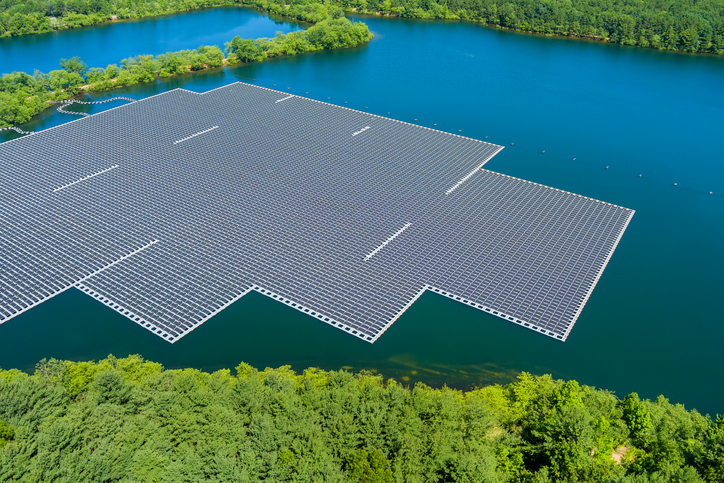Introduction to Renewable Energy
The quest for sustainable energy has never been more pressing. As climate change poses significant challenges, innovators across the globe are stepping up to transform how we harness power. From solar panels glistening in the sun to wind turbines dancing on the coastlines, renewable energy is taking center stage. But what does it mean to truly explore innovations in this field? It’s not just about adopting existing technologies; it’s about pushing boundaries and envisioning a cleaner future for our planet.
With advancements emerging at a rapid pace, these shifts promise exciting possibilities for both individuals and industries alike. The journey into renewable energy tech opens doors to new efficiencies, reduced costs, and enhanced environmental protection. Let’s dive into this fascinating world of innovation where each breakthrough brings us closer to a sustainable tomorrow.
The Advantages and Challenges of Renewable Energy
Renewable energy offers numerous advantages. It reduces greenhouse gas emissions, contributing to cleaner air and a healthier planet. This shift lessens our reliance on fossil fuels, promoting sustainability.
Economic benefits also emerge from renewable sources. Jobs in solar, wind, and other sectors are rapidly increasing. Local communities experience growth as new industries develop.
However, challenges persist. The intermittent nature of some renewable sources can lead to inconsistencies in energy supply. Storage solutions need improvement to ensure reliability during peak demand periods.
Moreover, initial investment costs can be significant for both consumers and businesses. Transitioning infrastructure requires careful planning and substantial resources.
Environmental impacts aren’t negligible either; land use for large-scale projects sometimes disrupts local ecosystems or wildlife habitats. Balancing these factors is crucial as we move forward with innovations in renewable energy technology.
Emerging Technologies in Solar Power
Solar power technology is undergoing a remarkable transformation. New materials are paving the way for more efficient solar cells. Perovskite solar cells, for instance, offer high efficiency rates and lower production costs. This innovation could reshape how we harness sunlight.
Flexible solar panels are another exciting development. They can be integrated into various surfaces, from building facades to clothing. This versatility opens up new possibilities for energy generation.
Moreover, advancements in energy storage solutions are crucial. Improved battery technologies allow us to store excess energy generated during sunny days. This means we can utilize that power even when the sun isn’t shining.
Smart grids play a vital role too, optimizing electricity distribution based on real-time data. As these technologies continue to evolve, they pave the path toward a cleaner and more sustainable future powered by renewable energy sources like solar power.
Revolutionizing Wind Energy with New Designs

Wind energy technology is evolving at a rapid pace. New designs are transforming how we harness this abundant resource.
Innovations such as vertical-axis wind turbines (VAWTs) have emerged, offering greater efficiency and reduced noise levels. These turbines capture wind from any direction, making them ideal for urban environments where space is limited.
Floating offshore wind farms are another breakthrough. They allow for larger turbine installations in deeper waters, capturing stronger winds that can generate significant power.
Moreover, advancements in materials science lead to lighter and more durable blades. This boosts performance while minimizing maintenance costs.
Smart sensors now play a crucial role too. By integrating IoT technology, these systems optimize energy production based on real-time weather data.
The future of wind energy looks promising with these cutting-edge designs paving the way for increased efficiency and sustainability in renewable energy solutions.
Harnessing the Power of the Ocean: Tidal and Wave Energy
The ocean is a vast reservoir of energy, with tides and waves offering immense potential for sustainable power generation. Tidal energy harnesses the gravitational pull of the moon and sun, creating predictable patterns that can be converted into electricity. This reliability sets it apart from other renewable sources.
Wave energy captures the kinetic motion of surface waves. Special buoys and underwater devices convert these movements into usable power. Both methods have minimal impact on land use, making them attractive alternatives.
Innovations in turbine technology are enhancing efficiency in tidal systems. Meanwhile, advancements in buoy designs optimize wave energy capture even further.
As coastal communities seek cleaner solutions, investments continue to flow into marine renewables. The dual approach of tapping into both tidal and wave resources could revolutionize how we think about oceanic power while protecting our environment for future generations.
The Potential of Geothermal and Hydrogen Fuel Cells
Geothermal energy taps into the Earth’s internal heat. This renewable resource offers a consistent and reliable power source. Unlike solar or wind, geothermal isn’t weather-dependent. It ensures stable energy production year-round.
Hydrogen fuel cells are another game-changer in the clean energy sector. They convert hydrogen into electricity through electrochemical reactions. The only byproduct is water, making them an incredibly clean option for transportation and stationary power generation.
Both technologies complement each other well. Geothermal plants can produce hydrogen efficiently using excess heat during peak operations. This synergy opens doors to new possibilities in sustainable energy systems.
Investments in these areas remain vital for future development. As technology advances, both geothermal and hydrogen hold promise for decreasing our reliance on fossil fuels while addressing climate change challenges head-on.
The integration of these innovations may redefine our approach to renewable energy sources significantly, paving the way toward a cleaner planet.
Incorporating Artificial Intelligence in Renewable Energy Systems
Artificial Intelligence is reshaping the landscape of renewable energy systems. By leveraging vast amounts of data, AI can optimize energy production and consumption in real time. This leads to improved efficiency and reduced waste.
Predictive analytics powered by machine learning algorithms enable better forecasting of energy supply and demand. This ensures that resources are allocated effectively, minimizing reliance on non-renewable sources during peak times.
AI also plays a crucial role in maintenance. Smart sensors can detect anomalies in equipment performance, allowing for proactive repairs before issues escalate. Such advancements increase the lifespan of renewable infrastructure.
Moreover, AI-driven solutions help integrate renewables into existing grids smoothly. They facilitate the management of distributed generation assets like solar panels or wind turbines, creating a more resilient energy network.
The collaboration between AI and renewable technologies promises not only enhanced operational efficiencies but also a pathway towards sustainable development goals around the globe.
Impact on Environment and Society
The shift toward renewable energy has profound implications for both the environment and society. By harnessing natural resources, we significantly reduce greenhouse gas emissions. This transition is crucial in combating climate change and its detrimental effects.
Renewable energy systems also promote biodiversity. Traditional fossil fuel extraction often disrupts ecosystems, whereas solar panels and wind turbines can coexist with wildlife when carefully sited.
Societal impacts are equally noteworthy. Job creation in renewable sectors offers new career opportunities for many communities. Training programs tailored to these industries empower individuals and stimulate local economies.
Moreover, access to clean energy improves public health by reducing air pollution. Communities can enjoy cleaner air, leading to better overall well-being.
As technology evolves, the integration of renewables into daily life will further enhance our relationship with nature while fostering sustainable development across various regions.
Government Policies and Investments in Renewable Energy
Government policies play a crucial role in shaping the landscape of renewable energy. They can provide the necessary framework for innovation and investment, attracting both public and private sectors.
Many countries are implementing ambitious regulations to promote cleaner alternatives. This includes tax incentives, grants, and subsidies that encourage businesses and homeowners to adopt sustainable technologies.
Investment in research is also on the rise. Governments are backing projects aimed at developing cutting-edge solutions like advanced solar panels or efficient wind turbines.
Moreover, international agreements foster collaboration among nations. These partnerships enable knowledge exchange and resource pooling that enhance global efforts toward sustainability.
As these initiatives unfold, they not only pave the way for greener energy sources but also stimulate job creation within emerging industries—offering new opportunities for a skilled workforce in an evolving market.
Future Outlook for Renewable Energy Technology
The future of renewable energy technology appears bright and full of promise. As the world increasingly acknowledges the urgent need to transition away from fossil fuels, innovations are emerging at an unprecedented pace.
Advancements in solar and wind technologies continue to evolve, increasing efficiency while reducing costs. The integration of artificial intelligence is making these systems smarter, optimizing energy output based on real-time data.
Tidal and wave energy hold immense potential as we explore new ways to harness ocean power. Similarly, geothermal energy remains a largely untapped resource that could contribute significantly to our clean energy needs.
Government policies are shifting towards support for these innovations, driving investments that will facilitate widespread adoption. Public awareness is growing, pushing society toward sustainable practices.
As researchers tackle existing challenges in storage and grid management, it’s clear that collaboration between industries will play a key role in this transformation. The road ahead may have obstacles but also offers exciting opportunities for innovation in renewable energy tech.
With each step forward, we edge closer to a cleaner planet powered by sustainable solutions—a goal worth striving for as we continue exploring the vast landscape of renewable energies.










